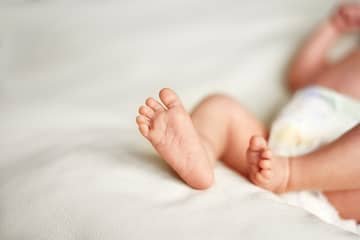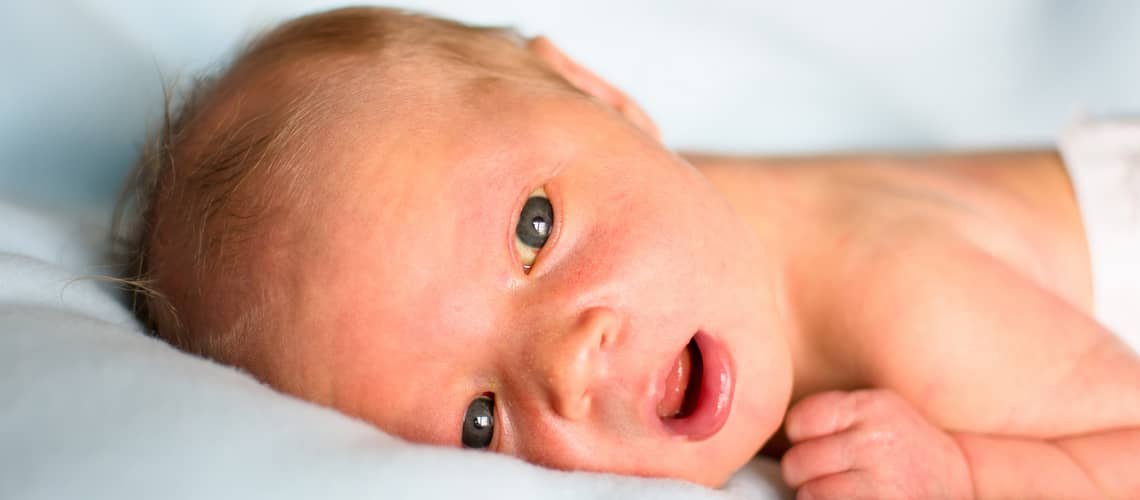
Neonatal jaundice - values, duration, sun treatment, phototherapy
Neonatal jaundice (icterus neonatorum) is a common condition, occurring in more than 50% of newborns (45 to 65% of healthy full-term newborns and 80 to 85% of premature newborns). It can appear a few days after birth - the baby's skin and part of the whites of the eyes turn yellow and the child is sleepier than usual. There is usually no cause for concern, as it is not a painful disease and often passes without any problems.
- Risk groups
- Causes of jaundice
- Physiological vs pathological jaundice – bilirubin values
- Jaundice in breastfed babies is not the same as jaundice from breast milk
- Neonatal jaundice - symptoms
- Neonatal jaundice - treatment
- How to prevent newborn jaundice?
- Experiences
- The most frequent questions - FAQ
- Comments
The course is more complicated in premature babies who do not have a sufficiently developed liver and bilirubin accumulates in their body. Early treatment and monitoring of the newborn is important. Mothers usually encounter the disease already in the hospital, because the onset is fast, newborn jaundice after coming home is no less common. The length of stay in the hospital after birth is usually 4 days, by then newborn jaundice should manifest itself, at least the pathological, physiological one can appear within 2 to 14 days. However, you should always consult a doctor about it.
Risk groups
It is not possible to say during pregnancy whether the baby will have neonatal jaundice or not after birth, but there are risk groups in which this condition occurs more often. You should monitor the condition of your baby a little more carefully if it has a low birth weight, was born prematurely, signs of an increased value of bilirubin appeared after birth in its siblings, or the mother suffers from diabetes. Risk factors for the development of severe jaundice are incompatibility of blood groups between mother and child (mother has Rh factor negative and newborn Rh factor positive, mother has blood group 0 and child blood group A or B), birth injuries (e.g. bruises or broken collarbone bones), premature birth, congenital infections, congenital defects of the digestive system, reduced activity of the thyroid gland, enzyme disorders and congenital defects of red blood cells. A child can also get jaundice from breast milk. Neonatal jaundice is more common in boys.
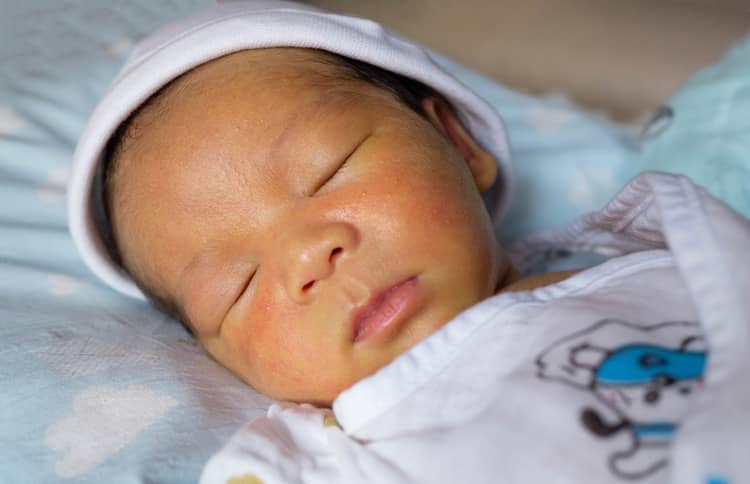
Causes of jaundice
During pregnancy, the child receives oxygen from the mother's oxygenated blood - its blood cells contain the so-called fetal hemoglobin, which can bind oxygen more tightly than adult hemoglobin. After the baby is born, fetal hemoglobin breaks down and is replaced by standard hemoglobin. Red blood cells have an average lifespan of 120 days, after which they break down in the spleen and liver. One of the main components of red blood cells is bilirubin, the accumulation of which in the body causes jaundice. Bilirubin, a yellowish to yellow-red substance, is insoluble in water, but thanks to various chemical processes in the body, it normally becomes soluble and is excreted from the body through the kidneys and intestinal tract - urine and stool.
Newborns do not yet have a sufficiently developed liver. In the first days, their body undergoes an increased breakdown of red blood cells (their lifespan is shorter than in the case of adults), the liver is not able to process all the bilirubin, so it accumulates in the ogranism. The shorter lifespan of red blood cells and the immaturity of the liver and kidneys are responsible for neonatal jaundice.
Physiological vs pathological jaundice – bilirubin values
Jaundice is a manifestation of an increased value of bilirubin in the blood, the so-called hyperbilirubinemia. In the case of newborns, it can be physiological jaundice (without an underlying disease) or pathological jaundice, which is the result of pathological changes in the organism. Physiological neonatal jaundice does not pose a threat to the child and will resolve spontaneously even without treatment. In pathological jaundice, a high value of bilirubin is dangerous for the nervous system and brain cells. If left untreated, it can cause irreversible brain damage in the most severe cases.
Physiological neonatal jaundice can develop in a child between the ages of 2 and 14 days, with the cause being the excessive breakdown of red blood cells and the inability of the liver to process the decomposing hemoglobin. In adults, the normal value is considered to be < 1 mg/dl (17.1 μmol/l) of bilirubin in the blood, in children the normal value is > 1 mg/dl (17.1 μmol/l). Hyperbilirubinemia is defined as an increase in the concentration of bilirubin in the blood above 1.5 mg/dl (25 μmol/l). The value of bilirubin in newborns usually does not exceed 12.9 mg/dl (220 μmol/l), a small percentage of newborns reaches a concentration of 15 mg/dl (256.5 μmol/l). Physiological jaundice usually subsides within 7 to 14 days. In some cases, a rise in bilirubin may occur in the 2nd and 3rd week, or the yellow color may last 3 to 10 weeks. The pathological will make itself known as soon as 24 hours after giving birth.
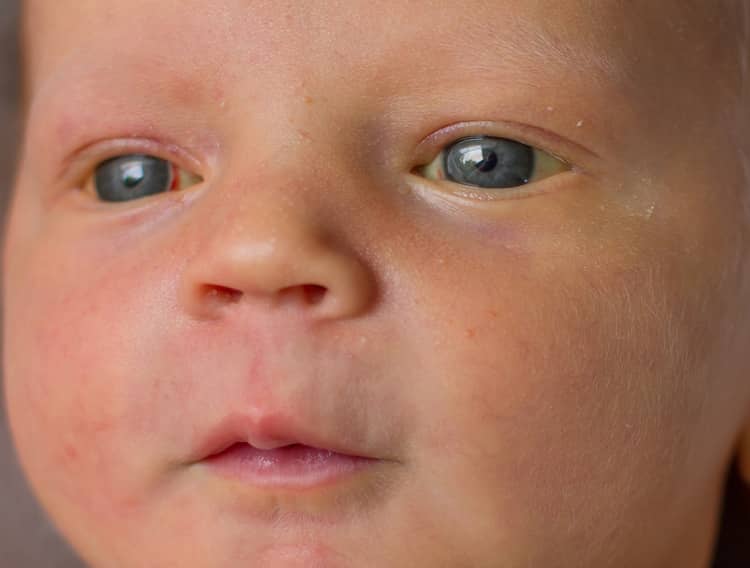
Jaundice in breastfed babies is not the same as jaundice from breast milk
Jaundice also occurs in full-term breastfed babies during the first week of life. The reason is the delayed departure of the pitch (the newborn's first stool) and the lack of fluids and calories, either due to problematic sucking of the baby to the breast, or due to insufficient or delayed production of breast milk. Therefore, early and frequent breastfeeding is important during the first days of a baby's life. The child should not be without food for more than 4 hours, in the first days you should breastfeed 8 to 20 times a day.
Jaundice from breast milk is caused by an increased concentration of an enzyme (b-glucuronidase) in breast milk, which causes the reabsorption of bilirubin from the intestine into the bloodstream. Jaundice can persist for the first 3 months of life and does not endanger the child.
Neonatal jaundice - symptoms
Jaundice is not difficult to diagnose, as it is manifested by yellowing of the skin, mucous membranes and the whites of the eyes. First, the skin begins to turn yellow on the face and neck (the most blood-stained parts of the body), then on the chest, abdomen and thighs, forearms and forelegs, and finally on the feet and palms. Under normal circumstances, when the skin in the area of the nose or forehead is compressed, the skin should lighten slightly, in case of jaundice, the compressed area will turn yellow.
Jaundice also causes a change in the child's behavior. Due to increased sleepiness and apathy, it is difficult to wake up the newborn for breastfeeding, which is associated with reluctance to breastfeed and lack of weight gain, and increased crying is typical.
Very high levels of bilirubin can pass from the blood into the brain and cause reversible (acute bilirubin encephalopathy) or permanent damage (kernicterus or chronic bilirubin encephalopathy). It is therefore necessary to monitor babies from risk groups during the first days and, if necessary, start treatment as soon as possible.
The doctor first performs the diagnosis non-invasively, using a skin test - a small device called a bilirubinometer. If the value on the device rises too much, a blood sample is needed to verify the results.

Neonatal jaundice - treatment
Neonatal jaundice is very common and in most cases harmless, therefore it does not require treatment. It subsides within 1-2 weeks to a month even without medical intervention. In more serious cases, the duration may be longer and it is necessary to start therapy immediately.
Fluids and sun therapy
Natural ways to get rid of jaundice are sufficient breastfeeding and exposing the baby to daylight (heliotherapy). The sun's rays are helpful in breaking down bilirubin in the skin into a harmless metabolite. Since the skin of a newborn is very sensitive, be careful of direct sunlight.
Breastfeeding will help the baby with the excretion of bilirubin. Starting up the digestive system ensures excretion through urine and stool. A newborn's stool is initially dark and thin, less frequent, later it appears more often and can be yellow or brown, the one containing bilirubin can be green in color.
Phototherapy
This is a standard procedure in the treatment of neonatal jaundice. The child is irradiated with blue light of a certain wavelength, which causes the breakdown of bilirubin into water-soluble lumirubin. In this form, the child can eliminate it with urine or stool. The length and frequency of phototherapy will be determined by the doctor based on the child's age, gestational age and bilirubin level. The child's eyes are covered with special glasses to protect his vision.
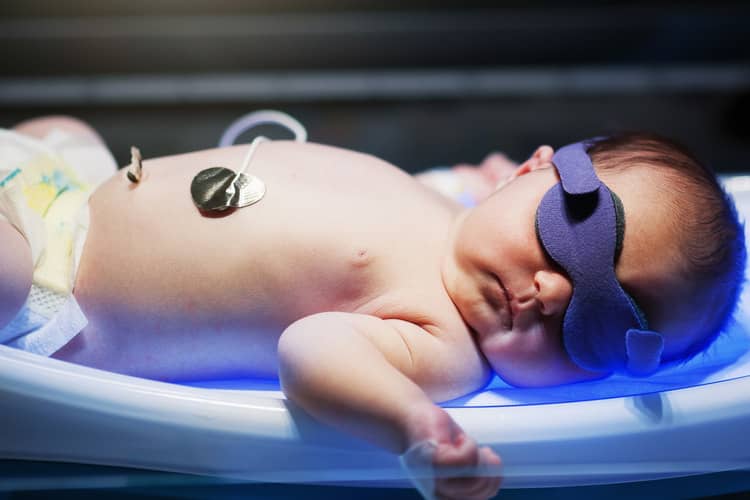
Medicines and blood transfusion
In more serious cases, drug treatment or blood transfusion is used. The child receives immunoglobulins that bind bilirubin. If the other therapeutic methods fail, the last option is exchange transfusion.
How to prevent newborn jaundice?
Since the level of bilirubin in a newborn is related to the ability of the liver to break down bilirubin, which is not sufficiently developed, it is not possible to prevent newborn jaundice 100 percent. It is important to take care of the baby, get enough fluids and prevent increased postpartum weight loss. Regular feeding is necessary so that the child has regular stools, with which bilirubin is excreted from the body.
Experiences
Mothers who have experience with newborn jaundice have revealed in discussions on forums that breastfeeding is suitable for this problem, but only if it is not severe jaundice. Then you have to breastfeed indirectly, boil the milk and give it to the baby little by little. The sun, or in more serious cases, phototherapy are always helpful.
The most frequent questions - FAQ
We will be very happy if you join the discussion under the article and write your experiences with newborn jaundice. Your advice and recommendations can help other parents overcome this condition. You can ask us in the comments if there is anything else you are interested in regarding newborn jaundice.
How long does newborn jaundice last?
What causes high bilirubin?
How to manage newborn jaundice?
Do homeopathics work for newborn jaundice?
Newborn jaundice - why does it not go away?
Pridať komentár




